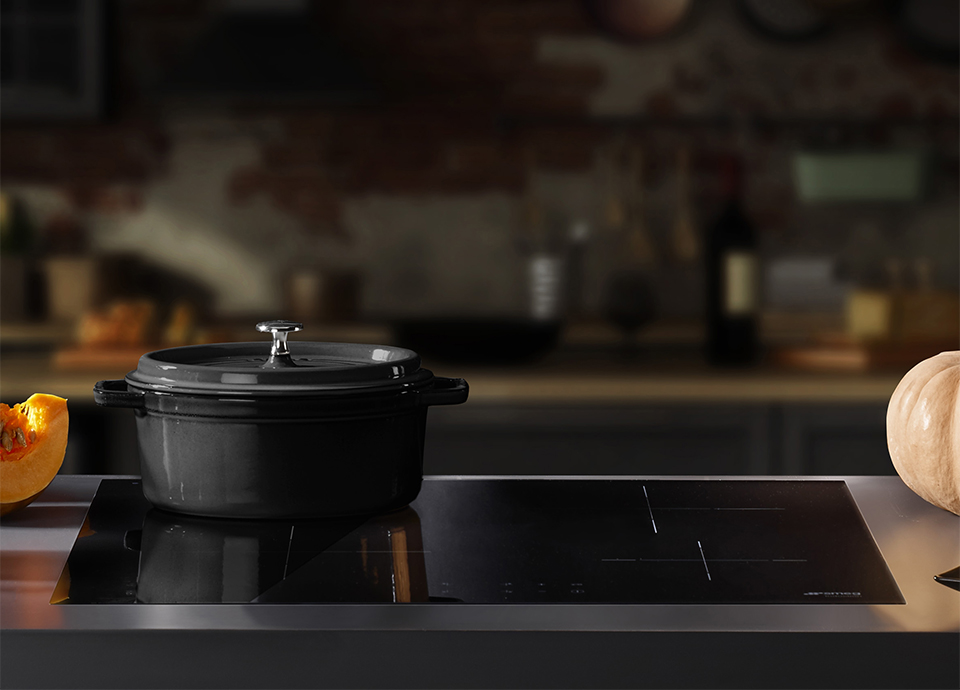How to Clean Cast Iron After Induction Cooking: Expert Tips & Tricks
Written By James Morgan
Barbecue enthusiasts know the value of a well-maintained cast iron skillet. Its ability to retain heat and impart a distinct flavor to dishes makes it a favorite among grill masters. However, when it comes to using a cast iron skillet on an induction cooktop, many wonder about the best practices for cleaning. This article dives into the details of how to clean cast iron after induction cooking, ensuring your skillet remains in pristine condition for your next barbecue session.

Understanding the Relationship Between Cast Iron and Induction Cooktops
Before diving into the cleaning process, it's essential to understand why cast iron and induction cooktops are a match made in culinary heaven. The magnetic properties of cast iron make it ideal for induction cooking, as it allows for even heat distribution and efficient cooking. If you're curious about the science behind this relationship, check out this comprehensive guide on induction-friendly cookware.
Essential Tools for Cleaning Cast Iron After Induction Cooking
When it comes to cleaning your cast iron skillet, having the right tools can make all the difference. Here are some essentials:
- Soft Bristle Brush: Ideal for removing food particles without scratching the surface.
- Non-abrasive Sponge: Helps in wiping off residue while preserving the seasoning.
- Coarse Salt: Acts as a natural abrasive to dislodge stubborn bits of food.
- Towel: Essential for drying and preventing rust.
Step-by-Step Guide on How to Clean Cast Iron After Induction Cooking
Here's a detailed guide to ensure your cast iron skillet remains in peak condition:
Step 1: Cool Down
Before cleaning, allow the skillet to cool down to avoid thermal shock, which can damage the iron. This step is crucial for maintaining the integrity of the skillet.
Step 2: Scrape Off Food Residue
Use a soft bristle brush to gently remove any food particles. For more stubborn bits, sprinkle a bit of coarse salt and scrub lightly. Avoid using metal utensils that can scratch the surface. To delve deeper into protecting your induction cooktop from scratches, read this article.
Step 3: Rinse with Warm Water
After removing the food particles, rinse the skillet under warm water. Avoid using soap, as it can strip away the seasoning. If you must use soap, ensure it's mild and used sparingly.
Step 4: Dry Immediately
Once rinsed, dry the skillet immediately using a towel. Leaving it to air dry can lead to rust, which compromises the skillet's performance.
Step 5: Re-season the Skillet
After drying, apply a thin layer of vegetable oil to the skillet's surface. Place it on a preheated induction cooktop for a few minutes to allow the oil to bond with the iron, enhancing the skillet's non-stick properties.
Maintaining Your Cast Iron Skillet for Long-Term Use
Regular maintenance extends the life of your cast iron skillet. Here are some tips:
- Avoid Harsh Cleaners: Stick to natural cleaning agents like salt and avoid harsh detergents.
- Store Properly: Ensure the skillet is completely dry and store it in a dry place to prevent rust.
- Regular Re-seasoning: Regularly re-season your skillet to maintain its non-stick surface.
For more insights into maximizing the lifespan of your cast iron skillet, explore this guide on using cast iron effectively.

Frequently Asked Questions
1. Can I use soap to clean my cast iron skillet?
While it's generally advised to avoid soap, using a mild soap occasionally won't harm the skillet. Ensure you re-season it afterward.
2. How often should I re-season my cast iron skillet?
It's best to re-season after every few uses or when you notice the skillet's surface becoming dull.
3. Is it safe to use metal utensils on a cast iron skillet?
It's recommended to use wooden or silicone utensils to prevent scratching the skillet's surface.
Cleaning your cast iron skillet after induction cooking is simple yet crucial for maintaining its quality. By following these expert tips, you can ensure your skillet remains a reliable tool for all your barbecue adventures. For more on using cast iron skillets, don't miss out on this extensive resource.



